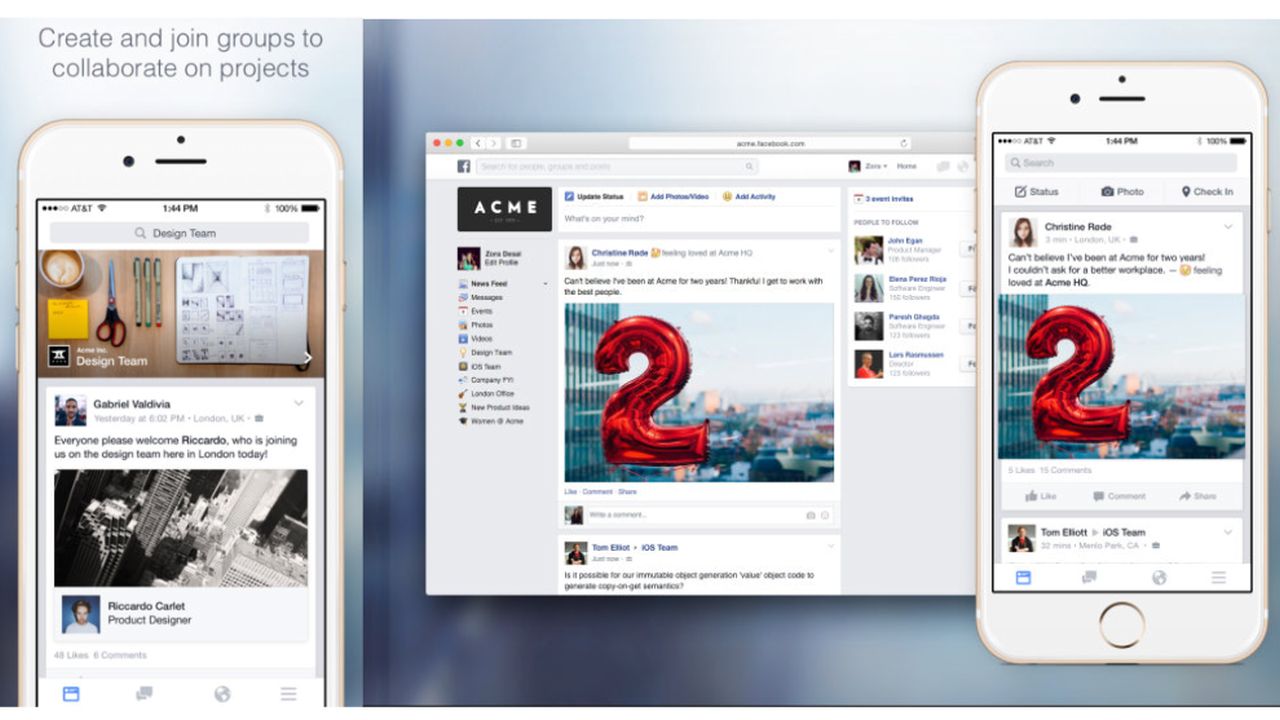How Facebook wants to change the way you work
Adoption of Facebook at Work is accelerating

Enterprise software is, by and large, quite dull. Microsoft Office, a long-standing fixture in almost every workplace, has not changed much in design – bar a few tweaks around the edges – since it launched over a decade ago. Others remain much the same, too.
Newer companies, like Slack or HipChat, have brought some colour and life to the office, but only focus on one very specific aspect – instant interaction – that does not permeate much beyond a specific type of employee or workplace.
Facebook wants to alter all of that and the way the company is doing it could, in a few years, change how you work.
Huge engagement
The project, called Facebook at Work, is still in its early stages but, according to several people we spoke to at different companies, engagement with it by everyday employees – i.e. people outside the IT department – is off the scale.
The Royal Bank of Scotland, which was one of the first companies to trial the software on a large scale, saw over 90% of its users return to Facebook at Work, according to Kevin Hanley, who leads design at the bank.
"I think Facebook lets us communicate, discuss and solve problems that other solutions, such as email, simply can't," he said in an interview last year. "We love the fact that Facebook at Work gives you the ability to opt-in to forums and groups you want to be part of rather than being on the receiving end of email distribution lists that you want to opt out of."
Song remains the same
The basis of Facebook at Work is, like Facebook at Home, the news feed, messaging, groups, photos, and everything else you'd expect. The layout – news feed in the centre, blue bar at the top, and so on – is largely the same, albeit with a few minor changes.
Are you a pro? Subscribe to our newsletter
Sign up to the TechRadar Pro newsletter to get all the top news, opinion, features and guidance your business needs to succeed!
This, Hanley said, was why people are engaged with it: unlike Office, email, or any other application, people already use Facebook. According to the company's most recent earnings report, the average user spends around 50 minutes per day on the social network.
"You would almost struggle to tell the difference between Facebook at Work and at Home," Hanley said. "That is a very specific intent. What you would recognise as Facebook in your personal life is what you'd recognise at work."
That kind of engagement is unprecedented and gives Facebook a massive springboard from which to build out other applications for different environments, like the workplace.
Danger of distraction
Of course, the fact people are already into Facebook can be a downside. "The biggest challenge for us is taking it from the social 'fun' experience to doing actual work on it," said Ben Sand, VP of operations at Kenshoo, in an interview earlier this year. "I would be lying if I said that we were not struggling with that even today."
Other companies we spoke to had similar problems, with employees spending time scrolling through the news feed rather than doing work. One person, who asked to remain anonymous because Facebook at Work is still in the testing stage, said the software can be "distracting because there is always something new to look at."
However, this may not be such a problem as the news feed is filled with work stuff, from pictures of products to statuses from your boss to messages from colleagues. Rather than scrolling through BuzzFeed, which is unlikely to have any work-related content, users are at least looking at semi-relevant updates.
Max Slater-Robins has been writing about technology for nearly a decade at various outlets, covering the rise of the technology giants, trends in enterprise and SaaS companies, and much more besides. Originally from Suffolk, he currently lives in London and likes a good night out and walks in the countryside.